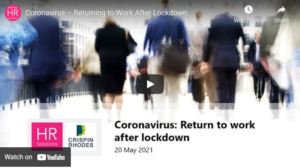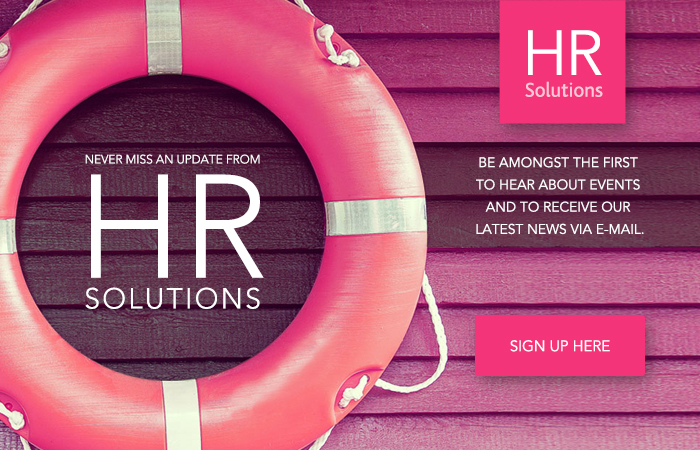1. How would layoff be beneficial in lockdown? Please explain.
If as a result of lockdown your business is severely impacted to the extent that you do not have enough work; then if the contract contains a lay off clause you can ask your workforce to stay at home in the short term on unpaid leave. There is a statutory lay off payment that employees with over one month’s service are entitled to receive.
2. Associates are not likely to feel ready to return to work at the work place? How can we build their confidence?
It is about building confidence through your communications. Share with employees the detail of your risk assessment in terms of the measures you have introduced; the fact that you are following government advice as it evolves and revisit the risk assessment process. Show employees that you listen and act on concerns and demonstrate that your priority is the safe working environment.
3. If the company may suffer from financial pressures, how can we give assurances to our staff about their salaries and benefits?
Open and transparent communications are key, but equally, it is important to not promise things that you may not be able to sustain. If the business has been impacted, then be open with your employees about that; and what steps you are taking as a business to manage the risks and the impact.
4. What adaptions may we need to make to our Code of conduct now we are facing additional Covid-19 challenges?
Employees have an obligation in the workplace to cooperate with their employer in respect of health and safety. The Government have also particularly mentioned the need for employees to follow the advice of their employer in their recent announcement about releasing lockdown. If you are introducing measures to ensure that the workplace and employees can be Covid-19 safe, and an employee was to breach these, this would be a conduct matter for a breach in company procedures and for which you would have the ability to address using your usual disciplinary procedures.
5. What is the Isolation period for people coming from France into UK?
There is no isolation period. The UK and France are working together on the management of their common border as there is a need for trade to continue in this area.
6. In determining who to un-furlough would it be deemed fair to select on the grounds of who is at the highest risk based on the Government’s advice ie based on age/underlying health risks etc?
It would be reasonable to take account of personal circumstances when managing furlough. Those who are shielding for example for being classed as “extremely vulnerable” can still be eligible for the scheme and this could be considered a reasonable step in managing their health and safety.
7. About “be creative with working hours?” Which working hours would you suggest?
This depends on your business needs. Some examples could be to stagger start times, and have varying start times of eg 7am and 10am to allow some employees to start work outside peak commute times. Which is important if anybody relies on public transport. Another suggestion could be perhaps to help somebody who has to balance work and home schooling by allowing them to do a few hours in the morning and some into the evening. By doing this, you are helping them to do the home schooling during the day with their children.
8. I have a salesperson who works mostly in London and has to travel by public transport. He has underlying health conditions and a relative has died from Covid-19 so he is understandably very nervous. Given the guidance is to wear a face covering on public transport, can we insist that he travels (assuming his clients want to see him/are accepting visitors)?
It would most likely be deemed unreasonable to force your employee to travel; given the health condition and the circumstances of a family member and anxiety. If you can find ways to put measures in place that would safeguard him; such as changing his hours so he travels at quiet times; can he do any of the work at home using remote meeting software and/or limit the time on site, or perhaps one day at home, doing e.g. admin/office type activity and sales work the rest of the week? If he perceives the risks too high then explore the use reasonable unpaid time off/annual holiday to support.
9. How far do we have to accommodate staff feeling unsafe using public transport on their way to work? What if the concern is something outside the employer’s control such as public transport in London?
Given the extremely serious and severe impact of Covid-19 an employer is likely to have to go above and beyond in trying to help their employee. If an employer can’t offer home working for their normal role; can they find different work that can be carried out at home; can they rent out parking spaces so employees can now drive to work rather than taking public transport; can they change hours so employees are using public transport at quiet times? If the employee still feels unsafe in travelling and you have explored all other options with them then you may have to agree some unpaid leave or that they take some holiday.
10. The government guidance states that people should return to work, but we only want people to return to work when we have enough work for them. What is the view on this?
If you have furloughed employees and work is still not there; you are entitled to continue to use the furlough scheme. The scheme has been extended until end of October. If work returns, then this is the point that they no longer become eligible for furlough and you would not be able to continue claiming. You would then look to un-furlough some or all of your staff. If it looks like the work is changing, or not as much is available, and this brings up the need to review your structure and model, then it may be managing a restructure/redundancy programme or short time working is appropriate and you would need to determine which roles you do need, how many, and therefore what any selection pool would look like. We also await details of the Job Retention Scheme from August to October which the Government have advised will allow for some part time working.
11. How will the part time work and furlough work?
We do not have the detail as yet on how the scheme will change from August to October. The government have promised that guidance will be issued before the end of May 2020.
12. Can any consultation be carried out through furlough or short time working?
Yes, you are entitled to consult with employees during furlough leave.
13. If you cannot reach middle ground, can you then consider redundancy?
Redundancy only applies if one of the legal definitions is met, such as the work no longer exists. It would not be a redundancy situation.
14. When un-furloughing, what is “reasonable notice”?
It really does depend on the circumstances; people will have different needs and requirements. You should enquire around what steps they will need to take in getting sorted for returning to work and gauge a reasonable time period from that. It may be that a week is sufficient to allow somebody to have their childcare re open etc, or two weeks may be needed if they have to find a new nursery and the child can’t start there for couple of weeks.
15. Can someone be un-furloughed for a period and then re-furloughed?
Yes, you can un-furlough and re-furlough staff as long as they have been furloughed for the minimum 3 week period to be able to submit your claim.
16. Is there any guidance as of yet with regards to accruing holiday whilst being furloughed on the new extended scheme? Do the rules remain the same? We have a number of furloughed staff asking about this and cancelling holidays they are not taking at this current time. In addition, we also have staff that are not on furlough and they feel that it is not appropriate to take holiday whilst there are only a small number of people working. We are concerned for both physical and mental wellbeing if they do not take holidays.
The Government has published a useful guide: https://www.gov.uk/guidance/holiday-entitlement-and-pay-during-coronavirus-covid-19
17. How long would be reasonable to allow an employee to take unpaid leave if they do not want to come back to work before taking any formal action if they still refuse after conducting thorough risk assessment? Would this not be a breach of contract once all reasonable steps have been taken by the employer?
I think each case is going to be very dependent on the circumstances of each case, but importantly the nature of the work the employee undertakes and business. If this is being offered as middle ground, what you are effectively saying is that as the employer you believe the workplace is safe and you can demonstrate this; but it is the employee that does not. You may find that the fact the leave is unpaid, may lead to the employee actually returning. If an employee perceives it is unsafe to return then there is a risk they could claim automatic unfair dismissal under sections 44 or 100 of the Employment Rights Act if the employer insists on them returning and a risk that any dismissal would be unfair. The importance of appropriate risk assessments and measures to ensure safety are therefore imperative. As are discussions with the employee to understand the nature of their concerns and whether there is anything you can do to alleviate them.
18. Can you give notice while someone is on furlough? Is this allowed within the Job Retention Scheme?
Yes, you can give notice while someone is on furlough. You can also still claim the grants (if eligible) for salaries paid by the employer even if the employee is “working out” their notice period during furlough. However, what is not so clear is whether you can pay that notice period at the 80% furlough pay agreed or whether you have to top it up to “normal” salary. The legal arguments for and against paying at 100% are complex. If you decide to pay at 80% and an employee is subsequently successful at tribunal then you would have to pay the difference then. However, in such circumstances the employer would not be able to rely on any post termination clauses if the tribunal rules a breach of contract.
19. How can you reasonably prevent staff taking holidays all at once when they return to work?
This is going to be a real challenge for some employers. The government produced this guide which may help: https://www.gov.uk/guidance/holiday-entitlement-and-pay-during-coronavirus-covid-19#taking-holiday
20. Will we be able to furlough staff who have not yet been furloughed, part time as from August?
Details of revised scheme, which is due to be effective from August onwards have not yet been announced. We expect clarity from the Government by the end of May, which will give more information around how part time working will operate simultaneously with the scheme.
21. If we have an employee who is on furlough can we keep them on furlough and get a contractor in to perform their role? As we only need short term cover as there is insufficient work for them to work their normal hours.
The answer does depend on the reason they are furloughed in the first place. An employer can claim through the coronavirus job retention scheme for those cases where there is no work for the employee to do; if they had to close the workplace down and the work cannot be undertaken at home; if they are shielding or have caring responsibilities.
If it was due to a reduction in work and that work is now starting to come in but there is still insufficient work for them to do in their normal hours then you should consider them first for any work available and could consider un-furloughing them for a period of time to complete the work and then re-furloughing them once the work dries up again (as long as the furlough period is 3 weeks to enable you to claim).
If however they are shielding, or have caring responsibilities (such as childcare), and the work is still there you would be able to bring in temporary resource to cover it, whilst the employee is on that period of absence.
22. What kind of help needs to be given to employees who get affected by coronavirus?
Firstly, so long as they qualify for SSP, then SSP will be paid from day 1 of absence, rather than from day 4. If somebody was to come down with symptoms whilst at work, then it would be about ensuring they went home immediately. If you offer an Employee Assistance Programme, then remind them of this service, as they may feel anxious. Other than these, then it is about keeping in regular contact as you would with any other absence so that when they are ready to return, it makes that return easier.
23. Should mental health wellness counsellors be assigned at the workplace?
This would certainly be an amazing initiative to offer your employees, and this would be seen very positively by them and would show your commitment to them in supporting their return. An alternative, if you were not able to fund this level of service, could be to offer an Employee Assistance Programme, as most will offer counselling services through them, either by phone or face to face








